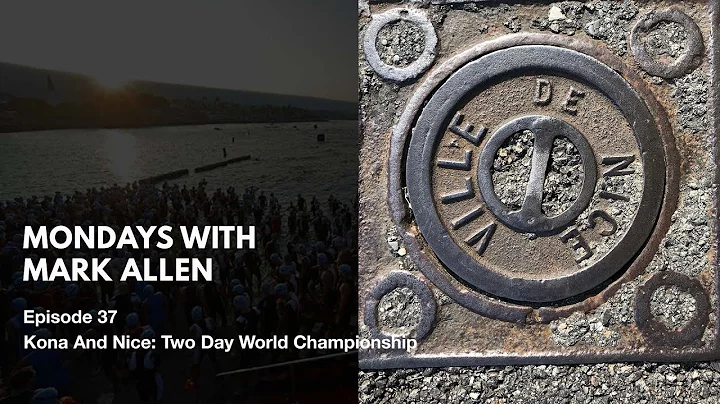Allen K Macknight
age ~83
from Signal Hill, CA
- Also known as:
-
- Allen Joan Macknight
- Allen A Macknight
- Allen Mac Knight
- Allen K Knight
- Allan K Macknight
- Allen M Knight
- Allen Mac
- Allen Mackight
- Joan Mac Knight
Allen Macknight Phones & Addresses
- Signal Hill, CA
- 6008 Charlwood St, Lakewood, CA 90713 • 562 867-6547
- Rolling Hills Estates, CA
- Redondo Beach, CA
- Los Angeles, CA
- 2581 Eastwind Way, Signal Hill, CA 90755 • 562 673-2856
Work
-
Position:Professional/Technical
Education
-
Degree:Graduate or professional degree
Emails
Vehicle Records
-
Allen Macknight
view source -
Address:2581 Eastwind Way, Signal Hill, CA 90755
-
VIN:1FMEU33817UA38607
-
Make:FORD
-
Model:EXPLORER SPORT TRAC
-
Year:2007
Us Patents
-
Water Reclamation System
view source -
US Patent:6649027, Nov 18, 2003
-
Filed:Mar 7, 2000
-
Appl. No.:09/520298
-
Inventors:Allen Kent MacKnight - Lakewood CA
Alex M. Lubman - Redondo Beach CA -
Assignee:Honeywell International Inc. - Morristown NJ
-
International Classification:B01D 310
-
US Classification:203 11, 203 2, 203 12, 203 91, 203 48, 203 98, 23295, 23303, 159 45, 159 473, 210664, 210713, 210774, 210805, 210808
-
Abstract:A water reclamation system for a closed environment includes a mixer that receives brine. A processor is downstream of the mixer, with the processor distilling substantially salt-free water from the brine in the substantial absence of salt crystallization. A crystallizer subsystem is downstream of the processor, with the crystallizer subsystem crystallizing salt from the brine and recycling the brine to the mixer.
-
Lithium-Exchanged Faujasites For Carbon Dioxide Removal
view source -
US Patent:7608133, Oct 27, 2009
-
Filed:May 16, 2006
-
Appl. No.:11/383589
-
Inventors:Stephen F. Yates - Arlington Heights IL, US
Allen A. MacKnight - Signal Hill CA, US -
Assignee:Honeywell International Inc. - Morristown NJ
-
International Classification:B01D 59/26
-
US Classification:95 95, 95139, 95148
-
Abstract:A process for removal of carbon dioxide from air using lithium-exchanged X-zeolites at low carbon dioxide partial pressures is provided. The process is particularly useful in applications where fresh air is not available and exhaled air needs to be recycled. An apparatus for carrying out the process is also provided.
-
Apparatus And Methods For Water Regeneration From Waste
view source -
US Patent:7610768, Nov 3, 2009
-
Filed:Nov 9, 2005
-
Appl. No.:11/271674
-
Inventors:Alex M. Lubman - Redondo Beach CA, US
Allen K. MacKnight - Signal Hill CA, US
Volodimir G. Rifert - Kiev, UA
Ivan V. Zolotukhin - Kiev, UA
Vladimir I. Usenko - Kiev, UA
Petr A. Barabash - Kiev, UA
Aleksandr P. Strikun - Kiev, UA -
Assignee:Honeywell International Inc. - Morristown NJ
-
International Classification:F25B 27/00
B01D 3/14
B01D 3/10
B01D 3/08 -
US Classification:622386, 202238, 202155, 202205
-
Abstract:A rotary multi-stage distiller for recovery of water from wastewater is provided. The rotary multi-stage distiller of the present invention can recover water from a wide variety of aqueous wastewaters such as, but not limited to, urine, condensate from air conditioning systems, wash water containing foaming soaps, seawater or polluted water. The multi-stage distiller can operate under vacuum conditions permitting the distillation to occur at low temperatures. The multi-stage distiller uses centrifugal forces for fluid pumping and for vapor/liquid separation. The multi-stage distiller comprises hydraulic seals for each stage which eliminate contamination of clean, recovered water by condensed waste water during the regeneration process. The multi-stage distiller also comprises a stationary shaft of stacked segments where each segment is associated with an individual stage of the multi-stage distiller. The number of stages therefore, of the multi-stage distiller of the present invention can be readily adjusted as needed by either adding a segment with a stage to the stationary shaft or removing a segment of the shaft with a stage to decrease the number of stages.
-
Water Removal Downstream Of A Turbine
view source -
US Patent:7837752, Nov 23, 2010
-
Filed:Dec 3, 2007
-
Appl. No.:11/949200
-
Inventors:Ranjit R. Darke - Los Angeles CA, US
Michael B. Faust - Redondo Beach CA, US
Allen K. MacKnight - Signal Hill CA, US
Russell Johnson - Elmhurst IL, US
Alexander M. Bershitsky - Glenview IL, US -
Assignee:Honeywell International Inc. - Morristown NJ
-
International Classification:B01D 50/00
-
US Classification:553851, 55320, 55337, 55391, 55392, 55394, 55396, 55397, 55399, 55441, 55447, 55DIG 17, 55DIG 23, 55DIG 14, 55456, 55457, 55321, 55319, 55348, 55455, 55423, 95268, 95269, 96191, 62 86, 62 87, 62401, 62402, 62DIG 5
-
Abstract:A rigid or semi-rigid demister pad is positioned between an air turbine and an inertial water removal device such as extractor in an air conditioning system for an aircraft. The demister pad comprises packed fibers or strands whose diameter typically ranges from approximately 10 or fewer microns to approximately 280 microns. The demister is capable of catching very small droplets discharged from the air turbine that coalesce into larger droplets that exit the demister pad and enter an adjacent water removal device downstream from the pad to separate the larger water droplets from the stream of air. This avoids using a water separator containing a coalescer bag that requires frequent maintenance and is sensitive to dirt and freezing. The demister can operate at freezing temperature, is not dirt-sensitive and requires no maintenance.
-
Advanced Hydrogen Auxiliary Power Unit
view source -
US Patent:7870717, Jan 18, 2011
-
Filed:Mar 5, 2007
-
Appl. No.:11/681990
-
Inventors:Allen K. MacKnight - Signal Hill CA, US
-
Assignee:Honeywell International Inc. - Morristown NJ
-
International Classification:F02C 3/20
F02C 6/18
F02C 7/32 -
US Classification:60 3912, 60 395, 60 39511, 60802
-
Abstract:An auxiliary power unit includes an autothermal reformer for producing a reformate from fuel; a turbine; a combustor for burning the reformate to power the turbine; a recuperator for obtaining thermal energy to improve the efficiency of the auxiliary power unit; a steam generator for using thermal energy from the recuperator to produce steam from a water supply; a condenser for recovering the water from turbine exhaust; and an electrical generator coupled to the turbine for producing electrical power. Recovered heat and water are used with the autothermal reformer to produce rapid and complete combustion of the fuel with a relatively low concentration of emissions.
-
Oil Centrifuge For Extracting Particulates From A Continuous Flow Of Fluid
view source -
US Patent:7959546, Jun 14, 2011
-
Filed:Jan 24, 2007
-
Appl. No.:11/626476
-
Inventors:Vipul P. Patel - Irvine CA, US
Allen K. MacKnight - Signal Hill CA, US -
Assignee:Honeywell International Inc. - Morristown NJ
-
International Classification:B04B 9/06
-
US Classification:494 49, 494 67, 494 79
-
Abstract:A centrifuge is employed to continuously remove particulates from a fluid. In one embodiment, the centrifuge removes small particles of soot from lubricating oil of large diesel engines. The fluid in introduced into the centrifuge through an inducer so that vortexes are not propagated in the fluid. Flow constrainers and flow straighteners maintain laminar flow of the fluid as it passes axially through the centrifuge. An exducer decelerates the fluid prior to its exit from the centrifuge. The exducer thus contributes to maintaining laminar flow conditions. Laminar flow may contribute to the soot-removal effectiveness of the centrifuge.
-
Oil Centrifuge For Extracting Particulates From A Fluid Using Centrifugal Force
view source -
US Patent:8021290, Sep 20, 2011
-
Filed:Nov 26, 2007
-
Appl. No.:11/945156
-
Inventors:Vipul P. Patel - Irvine CA, US
Allen K. MacKnight - Signal Hill CA, US
Steven R. Eccles - Torrance CA, US
Leonard Walitt - Marina Del Rey CA, US -
Assignee:Honeywell International Inc. - Morristown NJ
-
International Classification:B04B 11/06
-
US Classification:494 67, 494 49
-
Abstract:A centrifuge is employed to continuously remove particulates from a fluid. In one embodiment, the centrifuge removes small particles of soot from lubricating oil of diesel engines. The fluid is introduced into the centrifuge through a distribution rotor so that vortexes are not propagated in the fluid. Laminar flow of the fluid down the sides of the outer rotor may contribute to the soot-removal effectiveness of the centrifuge.
-
Method For Extracting Particulates From A Continuous Flow Of Fluid
view source -
US Patent:8574144, Nov 5, 2013
-
Filed:Jun 14, 2011
-
Appl. No.:13/160064
-
Inventors:Vipul P. Patel - Irvine CA, US
Allen K. MacKnight - Signal Hill CA, US -
Assignee:Fram Group IP LLC - Lake Forest IL
-
International Classification:B04B 9/06
-
US Classification:494 37, 494901
-
Abstract:A centrifuge is employed to continuously remove particulates from a fluid. In one embodiment, the centrifuge removes small particles of soot from lubricating oil of large diesel engines. The fluid in introduced into the centrifuge through an inducer so that vortexes are not propagated in the fluid. Flow constrainers and flow straighteners maintain laminar flow of the fluid as it passes axially through the centrifuge. An exducer decelerates the fluid prior to its exit from the centrifuge. The exducer thus contributes to maintaining laminar flow conditions. Laminar flow may contribute to the soot-removal effectiveness of the centrifuge.

Tracey MacKnight Allen
view sourceFriends:
Susan Swansburg, Kiss Fm, Julie Bertrand- Hearty, Shannon Gallagher
Youtube
Get Report for Allen K Macknight from Signal Hill, CA, age ~83





